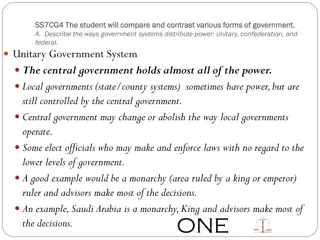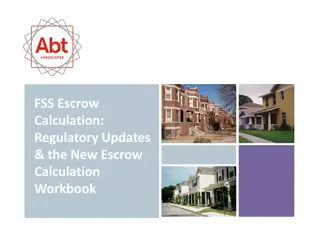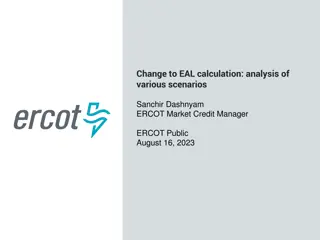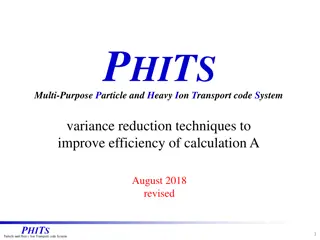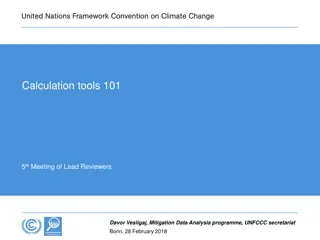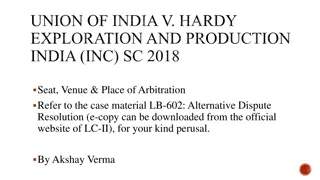Local Government Seat Calculation Framework
The legislative framework in South Africa outlines the seat calculation process for local government elections, emphasizing proportional representation. It involves determining quotas for proportionality, allocating seats based on total party votes, and addressing scenarios where parties may have more seats than allocated. A proposed amendment suggests recalculating the quota for parties with excessive won wards. This structured approach ensures fair representation in local councils.
Download Presentation

Please find below an Image/Link to download the presentation.
The content on the website is provided AS IS for your information and personal use only. It may not be sold, licensed, or shared on other websites without obtaining consent from the author. Download presentation by click this link. If you encounter any issues during the download, it is possible that the publisher has removed the file from their server.
E N D
Presentation Transcript
Seat Calculation for Local Government
Legislative Framework Legislative Framework Constitution of the Republic of South Africa. S157 (2) National legislation must prescribe a system (a) of proportional representation .which provides for the election of members from lists of party candidates drawn up in a party's preference; OR (b) of proportional representation as described in paragraph (a) COMBINED with a system of ward representation .. S157 (3) AN ELECTORAL SYSTEM IN TERMS OF SUBSECTION 157(2) MUST RESULT, IN GENERAL, IN PROPORTIONAL REPRESENTATION
Legislative Framework ( Legislative Framework (cont cont) ) Step 1 (determine the quota for proportionality) Schedule 1 of the Municipal Structures Act Item 12 (determining the quota of votes for a seat) in easy explainable format Total Votes (ward + PR) for PARTIES contesting both WARD and PR List (excludes votes cast for independent ward candidates.) Divide by Number of seats on Council less ward seats won by independents (they only contest wards) Round up and Disregard fractions Quota determining a seat
Legislative Framework Legislative Framework Step 2 Allocating seats Item 13 Divide Total votes per PARTY by the Quota to determine number of TOTAL seats per Party Decimal Surpluses must compete for any remaining unallocated seats on a ranking basis Wards won must then be deducted from Totals seats allocated per party The result is the seats that must be filled from the PR list
Legislative Framework Legislative Framework Step 3 (a party obtains a number of seats that is equal to or more than TOTAL number of seats) Such a party must not be allocated any seats from its PR list WARD SEATS ARE NOT AFFECTED This results in a scenario where a party may have more seats than the total allocation as determined by applying the QUOTA. This comes about as a result of Voters splitting their vote. IT is at this stage where the Legislation fails to give direction on how to deal with the situation of having more seats calculated than those proclaimed by the MEC.
Proposed Amendment Proposed Amendment Proposes a recalculation of a quota which excludes a party who has more won wards more than or equal to the allocation of TOTAL SEATS The principle is supported by existing provisions Independents and Parties who only contest Ward elections. Same formula is applied minus the seats and votes of the affected party who have excessive seats .





